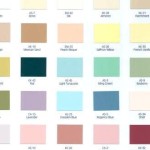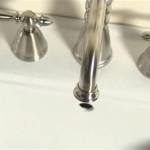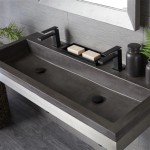How High To Hang Bathroom Lights: A Comprehensive Guide
Proper bathroom lighting contributes significantly to both the functionality and aesthetics of the space. The placement of light fixtures directly impacts visibility for tasks like shaving, applying makeup, and getting ready in the morning. Hanging bathroom lights at the correct height is crucial for achieving optimal illumination and creating a comfortable and visually appealing environment. This article will explore best practices for determining the ideal height for various types of bathroom lighting fixtures, taking into account factors such as mirror size, ceiling height, and the overall design of the bathroom.
When considering bathroom lighting, it's important to remember that the goal isn't just to brighten the room. It's about layering light to eliminate shadows, providing even illumination, and highlighting key features. This layering typically involves ambient lighting (general room illumination), task lighting (focused lighting for specific activities), and accent lighting (used to highlight architectural details or artwork). Understanding how each type of lighting contributes to the overall design informs where and how high to position each fixture.
The selection and placement of bathroom lighting should be deliberate, considering the specific needs and layout of the room. Ignoring the principles of proper lighting design can lead to uncomfortable glare, uneven illumination, and a space that feels either too dark or overly bright. Therefore, a thoughtful approach to selecting and positioning bathroom lighting fixtures is essential for achieving a functional and aesthetically pleasing result.
Vanity Lighting: A Critical Component
Vanity lighting is arguably the most important lighting component in a bathroom, serving as the primary source of illumination for grooming tasks. The placement of vanity lights directly impacts how accurately one can see their reflection, making proper height and positioning paramount. There are several common types of vanity lights, each with its own recommended height range.
Sconces: Sconces are wall-mounted fixtures that flank either side of a mirror. They provide balanced illumination and minimize shadows on the face. When installing sconces, the general guideline is to position the center of the fixture approximately 60 to 66 inches above the finished floor. This height range places the light source at eye level for most adults, providing optimal illumination for grooming tasks. However, this measurement may need adjustment based on the height of the individuals using the bathroom. For example, in a children's bathroom, a lower mounting height may be more appropriate.
The distance between the sconces and the mirror should also be considered. Ideally, the sconces should be placed roughly 24 to 30 inches apart, measured from the center of each fixture. This spacing ensures even illumination across the face and minimizes harsh shadows. The width of the mirror itself will influence the optimal spacing, with wider mirrors generally requiring greater separation between the sconces.
Vanity Light Bars: Vanity light bars are horizontal fixtures mounted above the mirror. They offer a more streamlined and contemporary look compared to sconces. When installing a vanity light bar, the bottom of the fixture should be positioned approximately 75 to 80 inches above the finished floor. This height provides sufficient clearance above the mirror and ensures that the light is directed downward onto the face without causing excessive glare. Just as with sconces, adjustments may be necessary depending on ceiling height and the height of the users.
The length of the vanity light bar should be proportionate to the width of the mirror. As a general rule, the light bar should be approximately two-thirds the width of the mirror. This proportion creates a balanced and aesthetically pleasing visual effect. Consider the light output of the fixture to ensure adequate illumination for the vanity area. LED fixtures are a popular choice for vanity lighting due to their energy efficiency and long lifespan.
Pendant Lights: While less common than sconces or light bars, pendant lights can be used as vanity lighting, particularly in bathrooms with high ceilings. When using pendant lights, the bottom of the fixture should be positioned approximately 30 to 36 inches above the vanity countertop. This height allows ample clearance for grooming activities while providing focused illumination. The number of pendant lights needed will depend on the width of the vanity and the desired level of illumination.
Pendant lights can add a touch of elegance and sophistication to the bathroom. When selecting pendant lights for vanity lighting, consider the style and finish of the fixtures to complement the overall design of the bathroom. Also, be mindful of the light output and color temperature of the bulbs to ensure optimal illumination and a comfortable ambiance.
Considering Ceiling Height and Room Size
Ceiling height plays a significant role in determining the optimal height for bathroom lighting fixtures. In bathrooms with standard eight-foot ceilings, the recommended heights for sconces and vanity light bars generally apply. However, in bathrooms with higher ceilings, adjustments may be necessary to maintain proper proportions and illumination. For example, in bathrooms with ten-foot ceilings, sconces may be mounted slightly higher, around 65 to 70 inches above the finished floor, and vanity light bars may be positioned around 80 to 85 inches above the floor.
In bathrooms with low ceilings, careful consideration is needed to avoid creating a cramped or claustrophobic feeling. In these situations, flush-mounted or semi-flush-mounted ceiling fixtures may be the best option for general illumination. For vanity lighting, smaller sconces or light bars may be preferable to avoid overwhelming the space. It's important to maintain adequate headroom and avoid placing fixtures too close to the mirror or other bathroom fixtures.
The size of the bathroom also influences the type and placement of lighting fixtures. In small bathrooms, fewer fixtures may be needed to provide adequate illumination. A single vanity light bar or a pair of sconces may be sufficient for the vanity area, while a single ceiling fixture can provide ambient lighting. In larger bathrooms, more fixtures may be necessary to ensure even illumination and prevent dark corners. Consider using multiple layers of lighting, including ambient, task, and accent lighting, to create a well-lit and visually appealing space.
The architectural style of the bathroom also deserves consideration. Contemporary bathrooms may benefit from sleek, minimalist lighting fixtures, while traditional bathrooms may call for more ornate and decorative options. The color scheme and materials used in the bathroom can also influence the choice of lighting fixtures. For example, darker colors may require more light to maintain adequate brightness, while lighter colors can reflect light and create a brighter space.
Additional Lighting Considerations
Beyond vanity lighting, other areas of the bathroom also require careful attention to lighting. The shower and toilet areas often benefit from dedicated lighting to improve visibility and safety. Recessed lighting is a popular choice for showers, providing focused illumination without taking up valuable space. The fixtures should be rated for wet locations to ensure safe operation in a humid environment.
In toilet areas, a simple ceiling fixture or wall sconce can provide adequate illumination. Consider using a dimmer switch to adjust the brightness and create a more relaxing atmosphere. Nightlights are also a useful addition to the bathroom, providing a soft glow for nighttime navigation.
Mirror lighting is another important consideration, particularly for makeup application and shaving. Backlit mirrors or mirrors with integrated LED lighting can provide even and flattering illumination. These types of mirrors eliminate shadows and make it easier to see details. The height of the mirror should be determined based on the height of the users, ensuring that the face is fully visible in the reflection.
The color temperature of the light bulbs used in the bathroom can also significantly impact the overall ambiance. Warm white light (2700-3000K) creates a cozy and inviting atmosphere, while cool white light (3500-4000K) provides a brighter and more energizing effect. Daylight-balanced light (5000-6500K) is ideal for tasks that require accurate color perception, such as makeup application. Experiment with different color temperatures to find the one that best suits your preferences and needs.
Finally, consider the energy efficiency of the lighting fixtures. LED lighting is a highly energy-efficient option that can save money on electricity bills and reduce environmental impact. LED bulbs also have a longer lifespan than traditional incandescent bulbs, reducing the need for frequent replacements. Look for Energy Star-rated lighting fixtures to ensure optimal energy efficiency and performance.

Bathroom Sconces Where Should They Go Designed

Vanity Light Height The Home Depot

How High To Place Your Bathroom Fixtures Inspired Style

How High To Place Your Bathroom Fixtures Inspired Style

Your Guide To Bathroom Lighting

Lighting Measurements For Installation Vitalux

How High To Place Your Bathroom Fixtures Inspired Style

How High To Place Your Bathroom Fixtures Inspired Style

How High To Place Your Bathroom Fixtures Inspired Style

How To Get Your Bathroom Vanity Lighting Right
Related Posts







